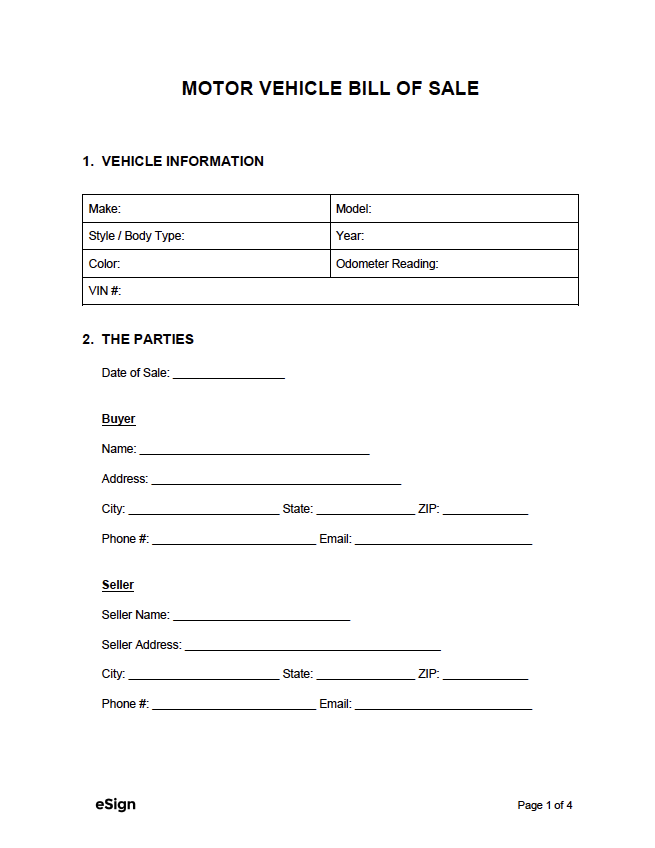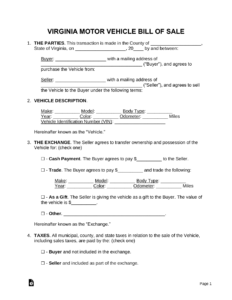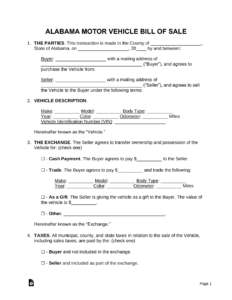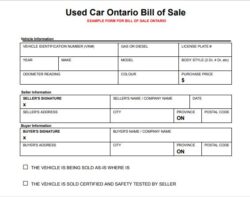When you are buying or selling a vehicle, one of the most crucial documents you will need is a bill of sale. It might sound like a complex legal paper, but it is actually a straightforward record of the transaction. Think of it as your official receipt and proof of ownership transfer, providing peace of mind for both parties involved.
Having a clear and concise document ensures that all the details of the sale are properly recorded, preventing misunderstandings or disputes down the road. This is precisely where a well-structured simple auto bill of sale template comes in handy, streamlining the process and making it accessible for everyone, regardless of their legal expertise.
Understanding the Basics of an Auto Bill of Sale
An auto bill of sale is more than just a piece of paper; it is a legally binding document that details the transfer of ownership of a motor vehicle from a seller to a buyer. It acts as official proof that the transaction took place, outlining the key terms and conditions agreed upon by both parties. This document is essential for several reasons, including registering the vehicle with your state’s Department of Motor Vehicles, transferring the title, and providing a record for tax purposes. It confirms that the seller has sold the vehicle and the buyer has taken possession, removing the seller’s liability for the vehicle after the sale date.

Despite its legal importance, a bill of sale does not have to be overly complicated. In fact, a simple auto bill of sale template is designed to be user-friendly, allowing individuals to complete it without needing extensive legal knowledge. It typically covers all the necessary information without adding unnecessary jargon or complexities, making the process of documenting your car sale or purchase quick and efficient. This simplicity helps ensure that no critical information is overlooked while also making the document easy to understand for everyone involved.
For sellers, it provides a clear record that they are no longer responsible for the vehicle, protecting them from future liabilities like parking tickets or accidents that might occur after the sale. For buyers, it serves as undeniable proof of purchase and ownership, which is vital for registering the vehicle in their name and obtaining insurance. It also solidifies the agreed-upon sale price and condition of the vehicle at the time of transfer.
Key Information to Include
- **Buyer and Seller Information:** Full legal names, addresses, and contact details for both parties. This helps identify who is involved in the transaction.
- **Vehicle Description:** Detailed information about the car, including the year, make, model, vehicle identification number (VIN), color, and odometer reading. The VIN is particularly important as it uniquely identifies the vehicle.
- **Sale Price and Payment Method:** The agreed-upon purchase price and how the payment was made (e.g., cash, check).
- **Date of Sale:** The exact date the transaction occurred and ownership was transferred.
- **Signatures:** Signatures of both the buyer and seller, along with the date of signing, to indicate their agreement to the terms.
Having all these details clearly laid out in a template ensures that the document is complete and legally sound, protecting everyone involved.
Why a Bill of Sale is Essential for Both Buyer and Seller
The importance of an auto bill of sale cannot be overstated for both parties in a vehicle transaction. For the seller, this document acts as a critical shield against future liabilities. Once the vehicle is sold, the seller is no longer responsible for any incidents, tickets, or accidents associated with that car. Without a documented transfer of ownership, it can be difficult to prove that the vehicle was indeed sold and is no longer in their possession or under their control. This clear paper trail provides peace of mind and legal protection, ensuring the seller can move on without lingering worries about their former vehicle.
On the buyer’s side, the bill of sale is equally indispensable. It serves as their official proof of ownership, which is a fundamental requirement for registering the vehicle with the state’s motor vehicle department. Without this document, the buyer would not be able to legally transfer the title into their name, obtain proper vehicle registration, or secure insurance coverage. It validates their claim to the vehicle and establishes a clear legal link between them and their new acquisition.
Beyond registration, a bill of sale also protects the buyer by documenting the vehicle’s condition at the time of sale, especially if it is sold "as is." While an "as is" sale means the buyer accepts the vehicle in its current condition with no warranties from the seller, the bill of sale still records the transfer and the agreed terms, preventing disputes about when certain issues might have arisen. It formalizes the transaction, making it clear what was purchased and for how much.
Ultimately, this simple document provides a layer of legal security that benefits everyone involved. It eliminates ambiguity, provides concrete evidence of the transaction, and helps both parties fulfill their legal obligations. From proving a sale to registering a vehicle, the bill of sale is the foundational document for a smooth and lawful transfer of ownership, ensuring that both the buyer and seller are protected and fully aware of the terms of the agreement.
Embracing the use of a simple auto bill of sale template for your vehicle transactions is a smart decision that offers immense benefits. It simplifies a potentially complex process, turning it into a straightforward exchange of information and signatures. This commitment to proper documentation ensures that your vehicle sale or purchase is not just successful, but also legally secure and stress-free for everyone involved.
By taking a few moments to complete this essential document, you are establishing a clear, undeniable record of your transaction. This foresight helps to prevent potential disputes, simplifies future administrative tasks like vehicle registration, and provides invaluable peace of mind for both the person selling the vehicle and the person buying it. It truly is the cornerstone of a responsible and smooth vehicle transfer.



